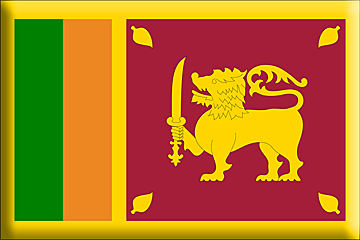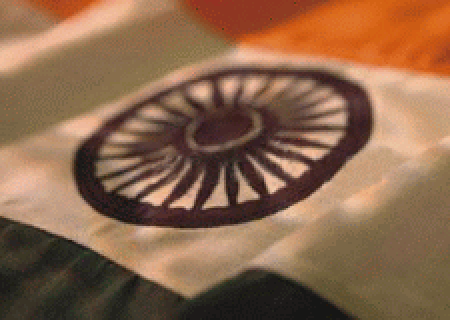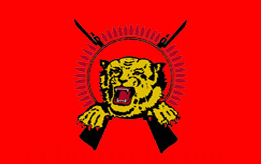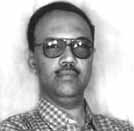|
TamilNet: Feb 20, 2008!
India's Peace and War
   The
now defunct Ceasefire Agreement in Sri Lanka was mooted and shadow-managed by
the BJP government, according to Indian journalist, M.R. Narayan Swamy.
Wickramasinghe and Pirapaharan were aware of this top secret mission of India,
supervised by Vajpayee's Advisor Brajesh Mishra, but not J.N. Dixit who
succeeded him with the change of government in May 2004. Dixit had to learn it
from Wickramasinghe. The CFA signed in February 2002 was unilaterally withdrawn
by the Sri Lanka government in January 2008. Swamy's revealing and the
chronology of events implicate the Congress establishment and the ego war of the
Chanakyas (Machiavellis) of New Delhi in belligerency returning to Sri Lanka. The
now defunct Ceasefire Agreement in Sri Lanka was mooted and shadow-managed by
the BJP government, according to Indian journalist, M.R. Narayan Swamy.
Wickramasinghe and Pirapaharan were aware of this top secret mission of India,
supervised by Vajpayee's Advisor Brajesh Mishra, but not J.N. Dixit who
succeeded him with the change of government in May 2004. Dixit had to learn it
from Wickramasinghe. The CFA signed in February 2002 was unilaterally withdrawn
by the Sri Lanka government in January 2008. Swamy's revealing and the
chronology of events implicate the Congress establishment and the ego war of the
Chanakyas (Machiavellis) of New Delhi in belligerency returning to Sri Lanka.
Brajesh Mishra, son of a former Chief Minister of Madhya Pradesh comes from the
background of Indian Foreign Service. He served as India's Ambassador to China.
He became the Principal Secretary to the Prime Minister and National Security
Advisor during Vajpayee's term as PM.
J.N. Dixit and M.K. Narayanan, both of Malayalee origins and retired from the
service, were brought into the apex body of national security immediately after
the Congress government came to power in May 2004. Dixit was High Commissioner
of India in Sri Lanka during IPKF times. He retired as the Foreign Secretary of
India. When Dixit, who held the title of the National Security Adivsor died,
M.K. Narayanan was appointed to that post in January 2005. He was earlier the
chief of the Intelligence Bureau of India (IB), from which he retired in 1992.
M. R. Narayan SwamyMr. Narayan Swamy's exclusive article to the Indo-Asian News
Service (IANS) was released on Sunday. Narayan Swamy, who previously worked for
United News of India, the AFP and The Strait Times in Singapore is now based in
New Delhi and works with the IANS. He has authored two books on LTTE and its
leader V. Pirapaharan, 'Tigers of Lanka: From Boys to Guerillas' (1994) and
'Inside An Elusive Mind - Prabhakaran' (2003).
The full text of his article follows:
India's covert role in Sri Lanka's ceasefire
By M.R. Narayan Swamy, New Delhi, Feb 17 (IANS)
 Now
that Sri Lanka has jettisoned the Ceasefire Agreement (CFA) with the Tamil
Tigers, one of India’s best kept secrets can be revealed: it was New Delhi that
quietly authored the process that led to the Norway-brokered pact. The dominant
thinking in India and Sri Lanka, and even elsewhere, is that New Delhi has been
a distant watcher to the goings on in the war-hit island barring its
interactions with Colombo and countries like Norway as part of a “hands off”
policy sparked off by former prime minister Rajiv Gandhi’s 1991 assassination. Now
that Sri Lanka has jettisoned the Ceasefire Agreement (CFA) with the Tamil
Tigers, one of India’s best kept secrets can be revealed: it was New Delhi that
quietly authored the process that led to the Norway-brokered pact. The dominant
thinking in India and Sri Lanka, and even elsewhere, is that New Delhi has been
a distant watcher to the goings on in the war-hit island barring its
interactions with Colombo and countries like Norway as part of a “hands off”
policy sparked off by former prime minister Rajiv Gandhi’s 1991 assassination.
While it is true that India took a detached view of the ethnic conflict in the
aftermath of Gandhi’s killing, things changed shortly after Atal Bihari Vajpayee
took office in 1998 at the head of a non-Congress coalition.
By 1999, the Indian state had concluded after years of study that there could
never be a military winner in Sri Lanka: neither the government nor the
Liberation Tigers of Tamil Eelam (LTTE) would reign supreme although at that
stage the rebels appeared to hold an upper hand.
The Indian government then took the view that it was time for a major peace push
in Sri Lanka.
Supervised by National Security Advisor Brajesh Mishra, the Indian establishment
got into the act of ushering in peace in Sri Lanka, with just one rider:
everything would be done away from media glare. Only a few would be in the know
of what was being planned.
Then Sri Lankan president Chandrika Kumaratunga was waging a “war for peace”
against the LTTE that steadily lost steam as the Tigers hit back with a military
precision that stunned the world.
The stalemate was a continuation of what had happened earlier. The Indian
military intervention in 1987-90 had run aground; the fighting between 1990 and
1994, mostly during Ranasinghe Premadasa’s presidency, led to no decisive
result; and the war during Kumaratunga’s presidency was going the same way.
The Indian establishment, however, felt that Kumaratunga was incapable of making
peace. What Sri Lanka needed, so went the reading, was a leader who was ready to
shake hands with the LTTE with a long-term vision to bring peace to the country.
It may have been a coincidence, but political convulsions quickly rocked
Colombo, destabilising Kumaratunga’s government and sparking an election in 2000
and a second election the next year.
The Indian establishment felt there was a need to bring in an international
player to facilitate peace in Sri Lanka, a party both Colombo and the LTTE could
do business with as they appeared incapable of talking to one another.
Kumaratunga’s first choice was France, but this the LTTE rejected.
India by then had zeroed in on Norway. Norwegian diplomats began visiting New
Delhi. No publicity was given to these brainstorming trips.
Norway was picked for mainly three reasons: it was physically far removed from
South Asia; it had no territorial ambitions; and it had a proven record in peace
building.
Kumaratunga and the LTTE eventually settled on Norway as the peace facilitator.
The war, however, continued to rage.
Norway’s chosen Special Envoy Erik Solheim travelled to Kilinochchi, the
LTTE-controlled northern part of Sri Lanka, in November 2000 and met the group’s
top leader, Velupillai Prabhakaran, for the first time.
The next month, the LTTE offered a ceasefire and extended it, month by month,
for four months. After that the Tigers again took the offensive.
In July 2001, the LTTE virtually overran Sri Lanka’s international airport at
Katunayake, dealing a shattering blow from which Colombo never recovered.
The second of the two elections followed, and Ranil Wickremesinghe, the
opposition leader, became prime minister in December 2001. Events galloped at a
rapid pace, in both New Delhi and Colombo, but all under wraps.
Overseen by New Delhi, a truce document began to be drafted. Norway was deeply
involved in the exercise, roping in some of its veteran diplomats.
Eventually, this translated into CFA. India also told Norwegian diplomats to let
the LTTE know about the Indian involvement in the entire effort.
On Feb 21, 2002, LTTE chief Velupillai Prabhakaran signed the CFA.
Wickremesinghe put his signature a day later.
Since India never publicised its role in the developments, many Indians argued
that New Delhi was letting Sri Lanka slip into Western hands!
By then, India had also mooted the idea of a Sri Lanka Monitoring Mission
(SLMM), the first such international peace monitoring body outside the UN aegis.
India wanted Nordic countries - Norway, Iceland, Sweden, Denmark and Finland -
to make up the SLMM to oversee the ceasefire.
The arrangement between India and Norway was that the latter would keep New
Delhi informed about its peace diplomacy. At some point of time, irritations did
crop up in this deal but these were quickly sorted out.
The CFA was a watershed in Sri Lanka’s blood-soaked history but within months
things began to go wrong.
Norway came under attack from large sections in Sri Lanka. Solheim bore the
brunt of the criticism, at times too personal, though he was only the best-known
face of an international exercise that had India’s solid backing and he himself
had no axe to grind.
In May 2004, Vajpayee gave way to Prime Minister Manmohan Singh, who headed a
Congress-led coalition government. J.N. Dixit, a former Indian envoy to Colombo
during the turbulent 1980s, was named the new national security advisor.
The nuts and bolts of India’s involvement in Sri Lanka’s peace process was till
then known only to a few in New Delhi.
Dixit’s eyes opened up when Wickremesinghe, who by then had lost power, flew to
New Delhi and gave a detailed briefing about India’s deep and covert role in the
entire process.
It was the first time Dixit realised that India had for years pursued a
pro-active policy towards Sri Lanka but quietly - in complete contrast to the
public perception that New Delhi had lost interest in the ethnic conflict.
Dixit was to learn quickly that this was also the case vis-à-vis Nepal and
Bangladesh. Unfortunately, Dixit died in office in 2005, and with him died many
secrets.
India’s active participation in the later much-maligned peace process in Sri
Lanka is as deep as was its role in the military training of Tamil militants two
decades ago.
Official India denies that it ever trained Tamils in warfare. In the case of the
peace process, even many in India are not fully aware of the story.
This was evident in some of the statements made in India when Colombo axed the
CFA. This has also been evident in repeated statements from many quarters in Sri
Lanka urging India to step in and throw out ‘imperialist’ Norway and the West!
In Norway, one diplomat recently made a public comment about India’s
entanglement with the peace process without, however, spilling out any details.
Vidar Helgesen, who was assistant foreign minister of Norway during the
inception of the peace process and is now secretary general of the
Stockholm-based International Institute for Democracy and Electoral Assistance,
said: “I may reasonably say that the Norwegian contribution in structuring the
CFA … was, indeed, crucial. However, we could not have achieved any success
without the active role played by India at every step of the negotiations.
Nothing could be attempted without Indian support at every step, including the
CFA.”
Courtesy: TamilNet.COM |

